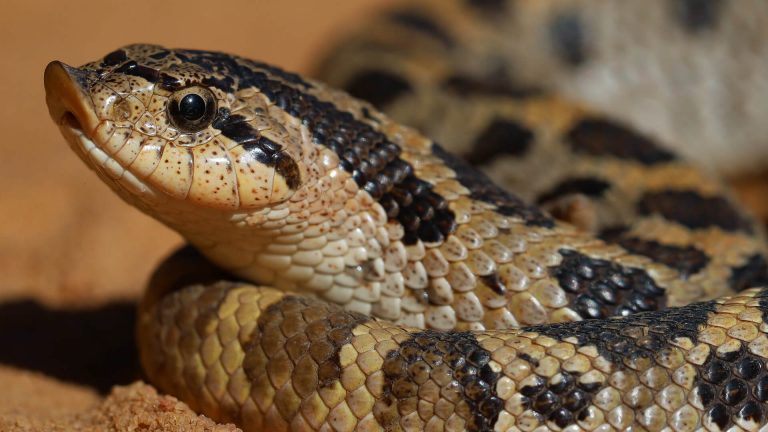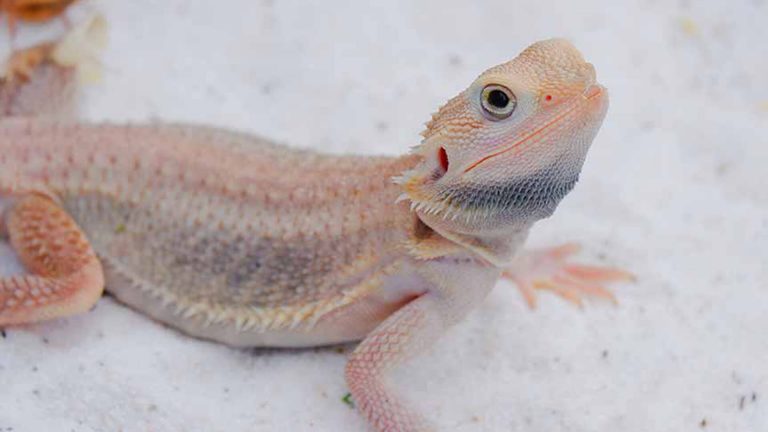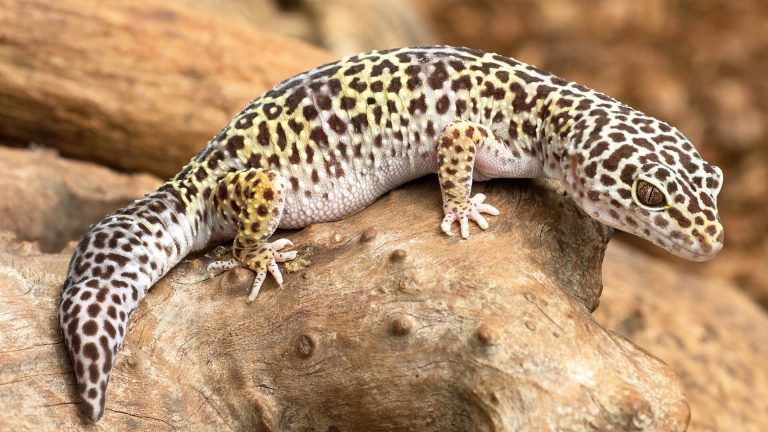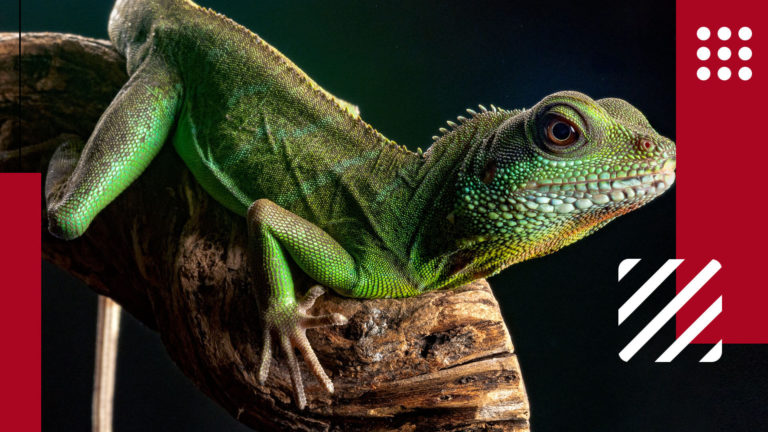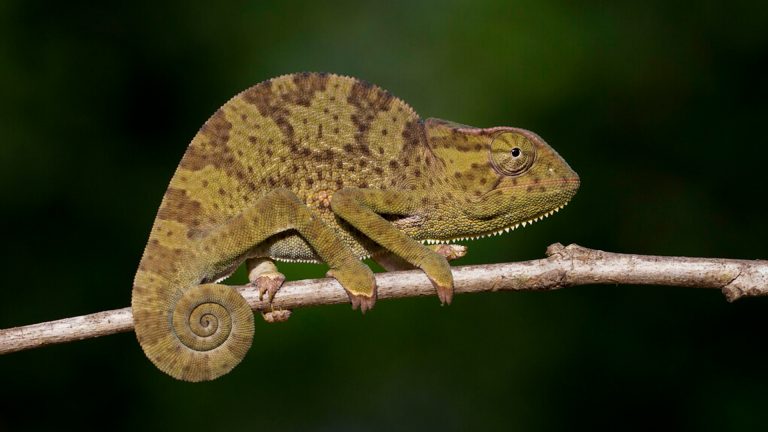Jackson's Chameleons, fascinating reptiles native to East Africa, are renowned for their incredible ability to change color and their unique physical characteristics. Named after the famous herpetologist Wilhelm Jackson, these chameleons have captured the attention of reptile enthusiasts and nature lovers alike. With their horn-like protrusions, independently moving eyes, and prehensile tail, Jackson's Chameleons are truly captivating creatures.
In this article, we will dive into the world of Jackson's Chameleons, exploring their diet, behavior, appearance, habitat requirements, and the considerations involved in keeping them as pets. Whether you're a reptile enthusiast or simply intrigued by these remarkable reptiles, this guide will provide valuable insights into the world of Jackson's Chameleons.
Distinctive Features of Jackson's chameleon
| Scientific Name | Trioceros jacksonii |
| Lifespan | Up to 10 years |
| Color | Males: Vibrant colors (green, blue, yellow, red) with distinct markings; Females: Duller colors |
| Size | Up to 17 inches |
| Health Risk | Low |
| Enclosure Size | Minimum 18x18x36 inches |
| Temperature | 75-85°F (24-29°C) |
| Humidity | 50-80% |
| Lighting | UVB lighting required |
| Feeding | Insects, small vertebrates, and plant matter |
| Handling | Limited, best observed rather than handled |
| Unique Trait | Triangular head and independent eye movement |
| Famous For | Their unique appearance and independent eye movement |
| Temperament | Can be territorial and defensive |
| Maintenance | High |
| Adaptability | High |
| Behavior | Not recommended for young children |
| Personality | Arboreal, slow-moving, and can change color |
| Social | Solitary |
Jackson's chameleon is a medium-sized chameleon, with males reaching lengths of up to 17 inches (including their tail), while females are smaller, typically reaching lengths of up to 8 inches. They are typically green or brown in color, with some individuals having distinctive horn-like protrusions on their heads. Jackson's chameleons are known for their ability to change color in response to their surroundings and mood.
In the wild, Jackson's chameleons are thought to have a lifespan of around 5-7 years. In captivity, with proper care, they can live for up to 10 years. Some of their distinctive features include their three-horned appearance (hence their scientific name, Trioceros, which means "three-horned") and their ability to change color. They are also known for their protruding eyes, which they use to hunt insects and other small prey.
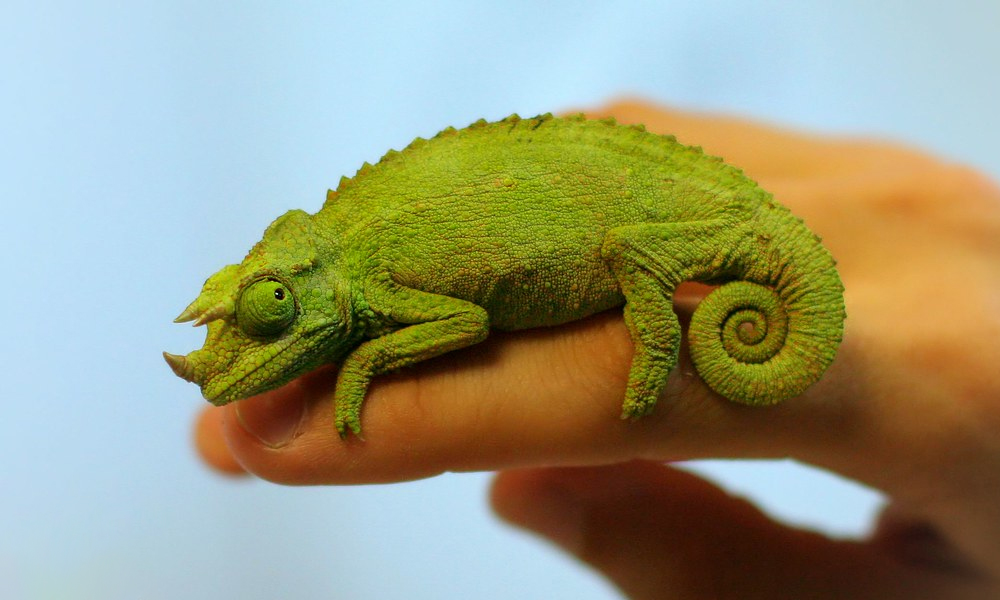
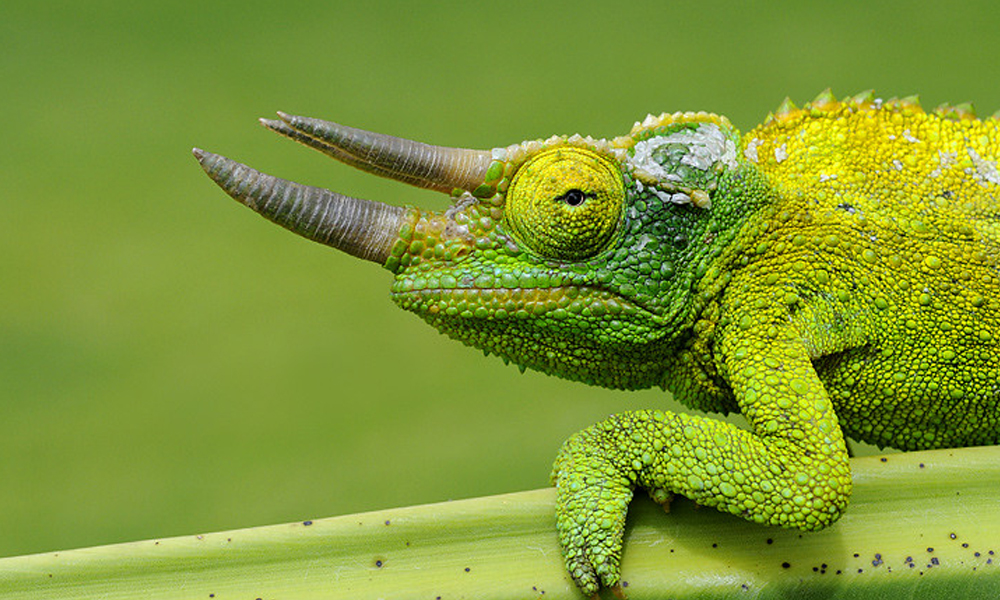
How to Take Care of Jackson's Chameleon?
Caring for a Jackson's chameleon requires a careful balance of providing a suitable habitat, proper diet, and regular attention. Their unique appearance and intriguing behavior make them fascinating pets. With attention to their specific needs, you can ensure a fulfilling and healthy life for your Jackson's chameleon.
Taking care of a Jackson's chameleon involves the following essential aspects:
How to Set Up a Habitat for Jackson's Chameleon?
To create a suitable habitat for a Jackson's chameleon, you will need to provide a large enclosure preferably 18x18x36 inches with plenty of climbing branches and plants. Jackson's chameleons are arboreal, meaning they spend most of their time in trees, so it is important to provide them with a vertical space to climb and explore. The enclosure should also have a secure lid to prevent the chameleon from escaping.
Inside the enclosure, you should provide a heat source, such as a basking lamp or ceramic heater, to create a temperature gradient within the enclosure. Jackson's chameleons need a temperature range of 75-85 degrees Fahrenheit during the day, with a slight drop in temperature at night. It is also important to provide a UVB light source, as chameleons need UVB light to properly metabolize calcium and maintain their health.
In addition to heat and light, you should also provide a water source for your chameleon to drink from. A shallow dish of water or a misting system can help keep your chameleon hydrated. Be sure to clean and refill the water dish regularly, and mist the enclosure daily to provide additional moisture.
It is also important to provide a varied and nutritious diet for your chameleon. Jackson's chameleons are insectivores, so they should be fed a diet of live insects, such as crickets, roaches, and mealworms. You can also offer your chameleon a calcium supplement to ensure they are getting enough calcium in their diet.
What to Feed Your Pet Jackson's Chameleon?
Jackson's chameleons are insectivores, so their diet should consist primarily of live insects, such as crickets, roaches, and mealworms. It is important to feed your chameleon a varied diet to provide them with the nutrients they need to stay healthy. In addition to insects, you can also offer your chameleon occasional treats, such as small pieces of fruit or vegetables.
When feeding your chameleon, it is important to provide a calcium supplement to ensure they are getting enough calcium in their diet. Calcium is essential for chameleons, as it helps them to maintain strong bones and healthy muscles. You can provide a calcium supplement by sprinkling it on your chameleon's food, or by using a calcium supplement block or dish in the enclosure.
It is also important to monitor your chameleon's food intake and make sure they are eating enough. Chameleons can sometimes be picky eaters, so you may need to experiment with different types of insects and feeding schedules to find what works best for your chameleon.
What to Avoid Feeding Your Jackson's Chameleon?
In general, you should avoid feeding your Jackson's chameleon any insects that are too large for them to eat easily. Large insects can pose a choking hazard and can also cause injury to your chameleon's mouth and throat. It is also important to avoid feeding your chameleon wild-caught insects, as these insects may be carrying parasites or other contaminants that could be harmful to your chameleon.
You should also avoid feeding your chameleon any insects that have been treated with pesticides or other chemicals. These chemicals can be toxic to your chameleon and can cause serious health problems. Instead, stick to feeding your chameleon commercially-raised insects that have been raised specifically for reptile consumption.
In addition to avoiding certain types of insects, there are also certain types of human foods that you should avoid feeding your chameleon. These include avocado, which can be toxic to chameleons, and citrus fruits, which can cause stomach upset. You should also avoid feeding your chameleon any processed foods or foods that are high in sugar or fat, as these can be unhealthy for chameleons and can lead to obesity and other health problems.
Health Concerns of Jackson's Chameleon
Jackson's chameleons, like all chameleons, are susceptible to a variety of health problems. Some common health concerns for Jackson's chameleons include metabolic bone disease, respiratory infections, and parasites.
- Metabolic bone disease is a common health concern for chameleons, and it can be caused by a lack of calcium or vitamin D in the diet. Symptoms of metabolic bone disease include lethargy, swollen limbs, and deformities of the skeleton. To prevent metabolic bone disease, it is important to provide your chameleon with a diet that is rich in calcium and vitamin D, and to provide a UVB light source for them to bask under.
- Respiratory infections are another common health concern for chameleons, and they can be caused by a variety of factors, including poor husbandry, stress, and exposure to cold temperatures. Symptoms of a respiratory infection include wheezing, lethargy, and a runny nose. To prevent respiratory infections, it is important to provide your chameleon with a clean, well-ventilated enclosure and to avoid exposing them to cold temperatures.
- Parasites are also a potential health concern for chameleons, and they can be transmitted through contaminated food or water, or through contact with other infected animals. Symptoms of a parasite infestation include weight loss, diarrhea, and lethargy. To prevent parasites, it is important to provide your chameleon with a clean, parasite-free enclosure and to avoid feeding them wild-caught insects.
What It's Like to Keep Jackson's Chameleon?
Jackson's Chameleons are renowned for their ability to change color, which they use for camouflage, communication, and temperature regulation. As pets, they display this impressive trait, and it can be quite mesmerizing to observe. They are generally solitary animals, so they may not seek out constant interaction with their owners. However, they can become accustomed to human presence over time and may tolerate gentle handling.
While Jackson's Chameleons may not be as affectionate as some other pets, they can still form a bond with their owners. They may become more comfortable with human presence and recognize their owners over time. Observing their unique behaviors, such as color changes and tongue projection, can be highly engaging and rewarding for the owner.
Other Pets to Keep or Avoid with Jackson's Chameleon
Jackson's chameleons are solitary animals, so they should not be kept with other chameleons or with other species of reptiles. Keeping multiple chameleons together can lead to aggression and stress, which can harm the health of your chameleons.
It is also important to avoid keeping Jackson's chameleons with other pets, such as cats or dogs, as these animals can pose a threat to your chameleon. Chameleons are delicate animals, and they can be easily injured by larger pets.
Facts About Jackson's Chameleon
Here are some interesting facts about Jackson's chameleons:
- Jackson's chameleons are native to East Africa, specifically Kenya and Tanzania.
- They are named after the British herpetologist William Beebe, who collected the first specimens of the species in Kenya in the early 1900s.
- Jackson's chameleons are known for their ability to change color in response to their surroundings and mood.
- They are arboreal animals, meaning they spend most of their time in trees, and they have protruding eyes that they use to hunt insects and other small prey.
- Jackson's chameleons are insectivores, and their diet should consist primarily of live insects, such as crickets, roaches, and mealworms.
- Jackson's chameleons are solitary animals, and they should not be kept with other chameleons or with other species of reptiles. It is best to keep them alone in their own enclosure.
Frequently Asked Questions About Jackson's Chameleon
Here are some answers to some frequently asked questions about Jackson's chameleons:
How big do Jackson's Chameleons get?
Jackson's chameleons are medium-sized chameleons, with males reaching lengths of up to 17 inches (including their tail), and females reaching lengths of up to 8 inches.
Can Jackson's Chameleons change color?
Yes, Jackson's chameleons are known for their ability to change color in response to their surroundings and mood. They are typically green or brown in color, but they can change to other colors, including blue, red, and yellow, depending on their environment and emotional state.
What do Jackson's Chameleons eat?
Jackson's chameleons are insectivores, and their diet should consist primarily of live insects, such as crickets, roaches, and mealworms. It is also important to provide a calcium supplement to ensure they are getting enough calcium in their diet.
Can Jackson's Chameleons live with other pets?
No, Jackson's chameleons are solitary animals, and they should not be kept with other chameleons or with other species of reptiles. It is best to keep them alone in their own enclosure.
How long do Jackson's Chameleons live?
In the wild, Jackson's chameleons are thought to have a lifespan of around 5-7 years, while in captivity they can live for up to 10 years with proper care.

